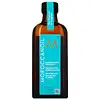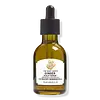What's inside
What's inside
 Key Ingredients
Key Ingredients

No key ingredients
 Benefits
Benefits

 Concerns
Concerns

 Ingredients Side-by-side
Ingredients Side-by-side

Water
Skin ConditioningPropanediol
SolventHydroxyethylcellulose
Emulsion StabilisingPolysorbate 20
EmulsifyingGlycerin
HumectantPhenoxyethanol
PreservativeCaprylyl Glycol
EmollientButylene Glycol
HumectantPentylene Glycol
Skin ConditioningArginine
MaskingLactic Acid
BufferingSalix Alba Bark Extract
AstringentPanthenol
Skin ConditioningSodium Hyaluronate
HumectantGlycine Soja Germ Extract
EmollientTriticum Vulgare Germ Extract
Skin ConditioningTrisodium Ethylenediamine Disuccinate
Hydroxyphenyl Propamidobenzoic Acid
Skin ConditioningParfum
MaskingSodium Hydroxide
BufferingBetula Alba Bark Extract
MaskingEpilobium Angustifolium Flower/Leaf/Stem Extract
Skin ConditioningGluconolactone
Skin ConditioningLinalool
PerfumingScutellaria Baicalensis Root Extract
AstringentZingiber Officinale Root Oil
MaskingLimonene
PerfumingSodium Benzoate
MaskingCitronellol
PerfumingCitral
PerfumingEugenol
PerfumingBenzyl Alcohol
PerfumingGeraniol
PerfumingAscorbyl Palmitate
AntioxidantSodium Metabisulfite
AntioxidantCalcium Lactate
AstringentWater, Propanediol, Hydroxyethylcellulose, Polysorbate 20, Glycerin, Phenoxyethanol, Caprylyl Glycol, Butylene Glycol, Pentylene Glycol, Arginine, Lactic Acid, Salix Alba Bark Extract, Panthenol, Sodium Hyaluronate, Glycine Soja Germ Extract, Triticum Vulgare Germ Extract, Trisodium Ethylenediamine Disuccinate, Hydroxyphenyl Propamidobenzoic Acid, Parfum, Sodium Hydroxide, Betula Alba Bark Extract, Epilobium Angustifolium Flower/Leaf/Stem Extract, Gluconolactone, Linalool, Scutellaria Baicalensis Root Extract, Zingiber Officinale Root Oil, Limonene, Sodium Benzoate, Citronellol, Citral, Eugenol, Benzyl Alcohol, Geraniol, Ascorbyl Palmitate, Sodium Metabisulfite, Calcium Lactate
 Reviews
Reviews

Ingredients Explained
These ingredients are found in both products.
Ingredients higher up in an ingredient list are typically present in a larger amount.
Parfum is a catch-all term for an ingredient or more that is used to give a scent to products.
Also called "fragrance", this ingredient can be a blend of hundreds of chemicals or plant oils. This means every product with "fragrance" or "parfum" in the ingredients list is a different mixture.
For instance, Habanolide is a proprietary trade name for a specific aroma chemical. When used as a fragrance ingredient in cosmetics, most aroma chemicals fall under the broad labeling category of “FRAGRANCE” or “PARFUM” according to EU and US regulations.
The term 'parfum' or 'fragrance' is not regulated in many countries. In many cases, it is up to the brand to define this term.
For instance, many brands choose to label themselves as "fragrance-free" because they are not using synthetic fragrances. However, their products may still contain ingredients such as essential oils that are considered a fragrance by INCI standards.
One example is Calendula flower extract. Calendula is an essential oil that still imparts a scent or 'fragrance'.
Depending on the blend, the ingredients in the mixture can cause allergies and sensitivities on the skin. Some ingredients that are known EU allergens include linalool and citronellol.
Parfum can also be used to mask or cover an unpleasant scent.
The bottom line is: not all fragrances/parfum/ingredients are created equally. If you are worried about fragrances, we recommend taking a closer look at an ingredient. And of course, we always recommend speaking with a professional.
Learn more about Parfum